| Srl | Item |
| 1 |
ID:
020981
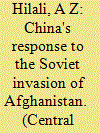

|
|
|
|
|
| Publication |
2001.
|
| Description |
323-351
|
|
|
|
|
|
|
|
|
|
|
|
|
|
|
|
| 2 |
ID:
064819
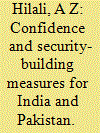

|
|
|
|
|
| Publication |
Apr-Jun 2005.
|
|
|
|
|
|
|
|
|
|
|
|
|
|
|
|
| 3 |
ID:
126977
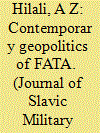

|
|
|
|
|
| Publication |
2013.
|
| Summary/Abstract |
In the post-9/11 era, the international strategic and political culture changed. The notion of 'global Jihad' became popular. The prevalence terrorist violence legitimized US interventions in Afghanistan. It further expanded to Pakistan's Federally Administered Tribal Areas (FATA) making it the chessboard of great power politics. The United States and NATO have launched military operations against the Taliban and al-Qaeda network. It blamed Pakistan for providing a safe haven to militants in its tribal belt. It is a fact that foreign intervention has become the main catalyst for militancy. The War on Terror is a 'bleeding wound' for Pakistan and people perceive that Islamabad should disassociate from the US-led war because it is against the national interest of the country.
|
|
|
|
|
|
|
|
|
|
|
|
|
|
|
|
| 4 |
ID:
054977
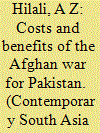

|
|
|
| 5 |
ID:
135689
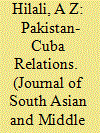

|
|
|
|
|
| Summary/Abstract |
In the contemporary state system diplomacy and foreign policy are the integral parts of world politics and both are perceived to be essential part of relationship and the effective instrument and important element for friendly and adversary countries in the world. Foreign relation with other countries is primarily of a diplomatic nature but countries extend economic, commerce, and cultural missions abroad to achieve political and strategic objective. Development in the world has enormously increased contracts, which demand the formulation of foreign policy according to a country’s interest.
|
|
|
|
|
|
|
|
|
|
|
|
|
|
|
|
| 6 |
ID:
066250
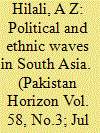

|
|
|
|
|
| Publication |
2005.
|
| Description |
p55-75
|
|
|
|
|
|
|
|
|
|
|
|
|
|
|
|
| 7 |
ID:
070803
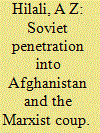

|
|
|
|
|
| Publication |
2005.
|
| Summary/Abstract |
Afghanistan is a landlocked country and a famous cockpit, as well as heart of Asia. It has long been a chessboard of power politics of the "Great Game" between many great powers. The country is a mosaic of races and ethnic communities and has a tribal and feudal structure. Historically, Afghanistan served as a showcase for the Russian and Soviet political and strategic interests and, in the recent past, Soviet political and economic influences fundamentally altered the domestic scene in the country. The monarchical era was replaced by democratization and the political process first gave rise to the dominance of the Marxist Peoples' Democratic Party of Afghanistan (PDPA) and, ultimately, the Saur Revolution of 1978, which brought the Marxists to full power. However, the PDPA's reforms de-stabilized the Communist regime as the Afghan masses reacted against them. Therefore, the Soviet Union invaded Afghanistan in 1979 to protect its client regime, which was on the edge of collapse.
|
|
|
|
|
|
|
|
|
|
|
|
|
|
|
|
| 8 |
ID:
067541
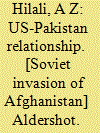

|
|
|
|
|
| Publication |
Aldershot, Ashgate, 2005.
|
| Description |
xvi, 304p.
|
| Series |
US foreign policy and conflict in the Islamic world
|
| Standard Number |
0754642208
|
|
|
|
|
|
|
|
|
|
|
|
Copies: C:1/I:0,R:0,Q:0
Circulation
| Accession# | Call# | Current Location | Status | Policy | Location |
| 050563 | 327.730549109048/HIL 050563 | Main | On Shelf | General | |
|
|
|
|